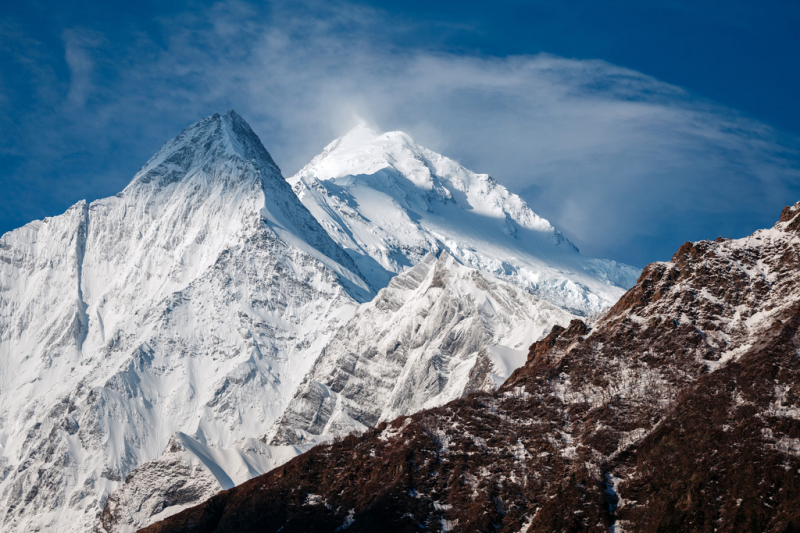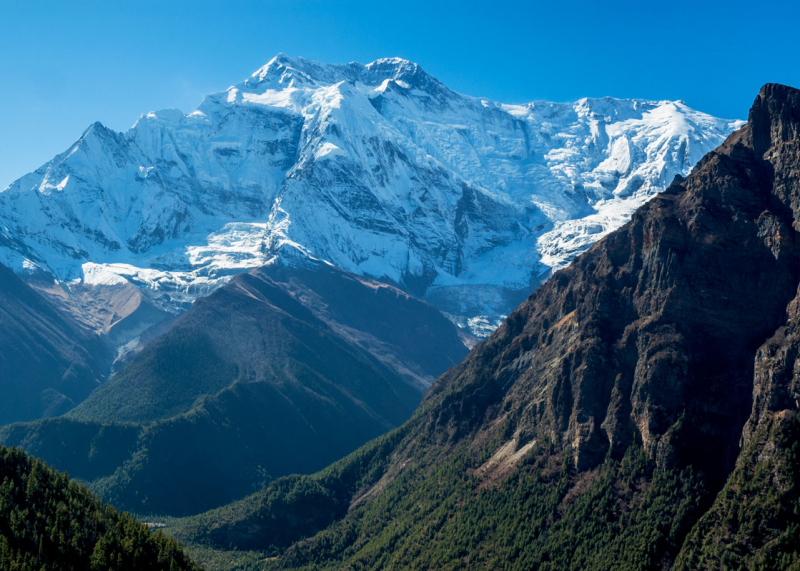Annapurna II

Annapurna II, along with the shorter Annapurna IV, are separated from the main crest of the Annapurna Massif. Its summit proper lies along a steep rock ridge that declines in altitude to run west to the top of the smaller peak, and is mostly free of snow near its highest point. The South Face is a massive pyramidal wall with only the central spur to break it up, whereas the North Face is more complicated, with steep walls cascading between ice fields between the summit and base of the mountain.
A big hanging glacier dominates the slope between it and Annapurna IV to the northwest, while the Northeastern wall has a characteristic, recurring pattern of cornices and rock bands that resemble a human face or skull, as seen in the accompanying shot.
Large avalanches, particularly those emanating from the high snowpack behind the North-central buttress, are a feature of Annapurna II. Rockfall, massive ice overhangs, and regular storms are all potential hazards. The traditional route of ascent uses the central connecting ridge with Annapurna IV to avoid many of its objective hazards, limiting the scope of mountaineering excursions.
Location: Annapurna Himalaya
Elevation: 7,937m











